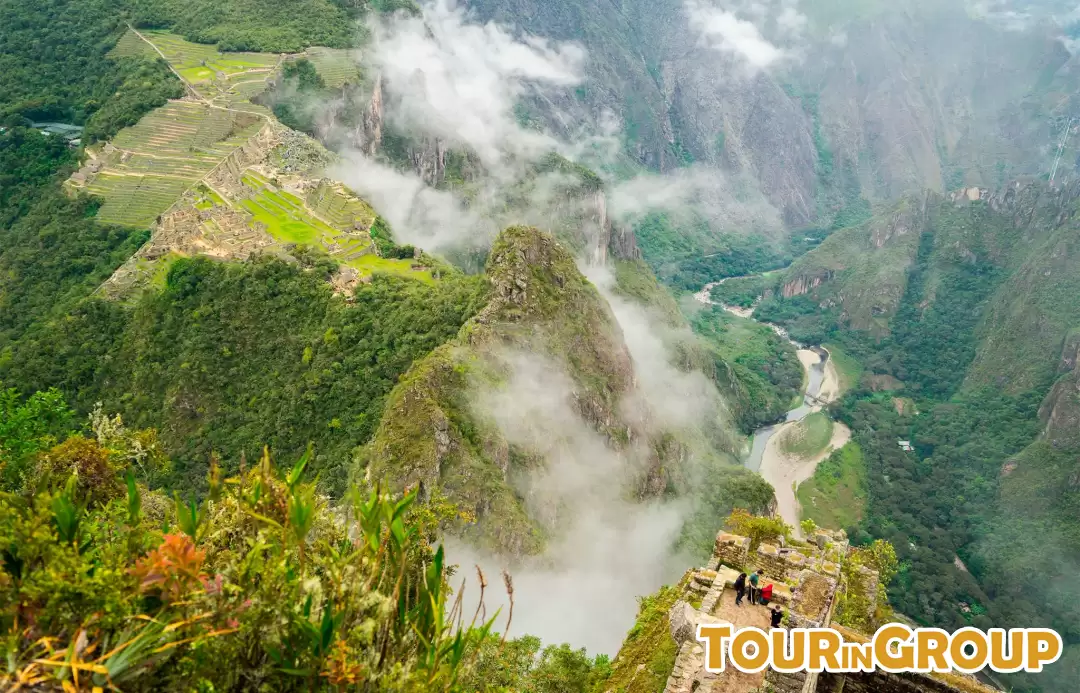Inca Trail

The Ultimate Guide to Hiking the Inca Trail in Peru
Introduction
The Inca Trail is one of the most famous trekking routes in the world, offering hikers the chance to walk in the footsteps of the ancient Incas while exploring breathtaking landscapes and ruins. This 4-day hike through the Andes culminates at the stunning Machu Picchu, a UNESCO World Heritage Site, and one of the New Seven Wonders of the World.
What is the Inca Trail?
The Inca Trail is part of an ancient network of paths built by the Inca civilization, known as the Qhapaq Ñan, which stretches across much of South America. The classic route to Machu Picchu is about 42 km (26 miles) long, passing through varied terrains, from lush cloud forests to mountainous passes.
The trail is more than just a physical challenge; it’s a journey through history, as hikers encounter numerous archaeological sites along the way, each telling its own story of Inca culture.
Inca Trail Highlights
-
Start: Kilometer 82 (Piscacucho)
- This is where most hikes begin. Located near the town of Ollantaytambo, it’s the gateway to the adventure.
-
Dead Woman’s Pass (Warmiwañusca)
- The highest point of the trail at 4,215 meters (13,828 feet). This steep ascent is the most challenging part, but the views from the top are worth it.
-
Runkurakay
- A small, circular Inca ruin located on a ridge, providing a glimpse into the Incan architecture and purpose.
-
Phuyupatamarca ("Town in the Clouds")
- An impressive ruin at nearly 3,600 meters, often shrouded in mist, with panoramic views of the valleys below.
-
Wiñay Wayna
- A stunning archaeological site with agricultural terraces, offering a glimpse of Incan farming methods and settlement structures.
-
The Sun Gate (Inti Punku)
- The first view of Machu Picchu at sunrise after completing the trek. A magical moment for all hikers!

Permits and Regulations
The Inca Trail is a protected site, and access is strictly controlled. Only 500 people (including guides and porters) are allowed on the trail per day, and permits often sell out months in advance. To hike the trail, you'll need to book with an authorized tour operator, as solo trekking is not allowed.
When to book?
- Permits: Book your permit 6 months in advance during peak season (May–September).
- Low season (November–March): Rainy but fewer crowds. Permits are easier to get.
When to Go?
The Inca Trail can be hiked year-round, but the best time is during the dry season, which runs from May to September. During this time, you’re more likely to enjoy clear skies and pleasant hiking conditions, though temperatures can drop significantly at night, especially at higher elevations.
Avoid trekking in February, as the trail is closed for maintenance and heavy rains.
Difficulty Level
The classic 4-day trek is considered moderately difficult. It requires a good level of physical fitness, as hikers will be ascending steep mountain passes, navigating uneven terrain, and covering long distances daily. The altitude can also be challenging for those not acclimatized to high elevations, which is why spending a few days in Cusco before the trek is recommended.
How to Prepare for the Inca Trail
- Acclimatization:
- Spend at least 2–3 days in Cusco (3,400 m) to adjust to the altitude before starting the trek.
- Physical Training:
- Regular hiking, cardio, and leg-strengthening exercises will help prepare your body for the demands of the trail.
- Gear:
- Clothing: Layered clothing for both warm days and cold nights.
- Footwear: Comfortable, sturdy hiking boots with good ankle support.
- Accessories: A quality rain jacket, trekking poles (helpful on descents), and a sunhat.
Packing List
-
Clothing:
- Lightweight hiking pants
- Moisture-wicking shirts
- Warm jacket or fleece
- Rain poncho
- Beanie and gloves for cold mornings
-
Footwear:
- Broken-in hiking boots
- Sandals or flip-flops for camp
-
Other Essentials:
- Reusable water bottle or hydration system
- Sunglasses, sunscreen, and insect repellent
- Sleeping bag (can also be rented)
- Portable battery charger for your phone or camera
Food and Accommodation
Most tours provide meals and tents for hikers. The food is typically nutritious and carb-heavy to keep energy levels up. Vegetarians and other dietary preferences can usually be accommodated with advance notice. You’ll sleep in tents set up by porters at designated campsites.
Cost of the Inca Trail
The cost of hiking the Inca Trail varies depending on the tour operator and services provided. On average, expect to pay between $600 to $1,000 for a 4-day trek, which includes permits, guide services, porters, food, and equipment (tents, cooking gear).
Alternative Treks to Machu Picchu
If you’re unable to secure a permit for the Inca Trail or are looking for a different experience, there are several alternative routes that also end at Machu Picchu:
- Salkantay Trek:
- A more challenging and less crowded trek that offers incredible views of snow-capped peaks. This 5-day trek can be booked without a permit.
- Lares Trek:
- A culturally immersive route that passes through Andean villages where you can interact with local communities. This trek also takes about 4 days.
- Inca Jungle Trek:
- An adventure-packed option combining hiking, mountain biking, and even zip-lining, ideal for thrill-seekers.
Final Thoughts
The Inca Trail is not just a hike; it’s a journey through history, culture, and some of the world’s most stunning landscapes. Whether you’re a seasoned trekker or a first-time hiker, the experience of walking through ancient ruins and arriving at the iconic Machu Picchu is one you’ll never forget.
Start planning early, get fit, and prepare for an unforgettable adventure through the heart of the Andes!
Related tours